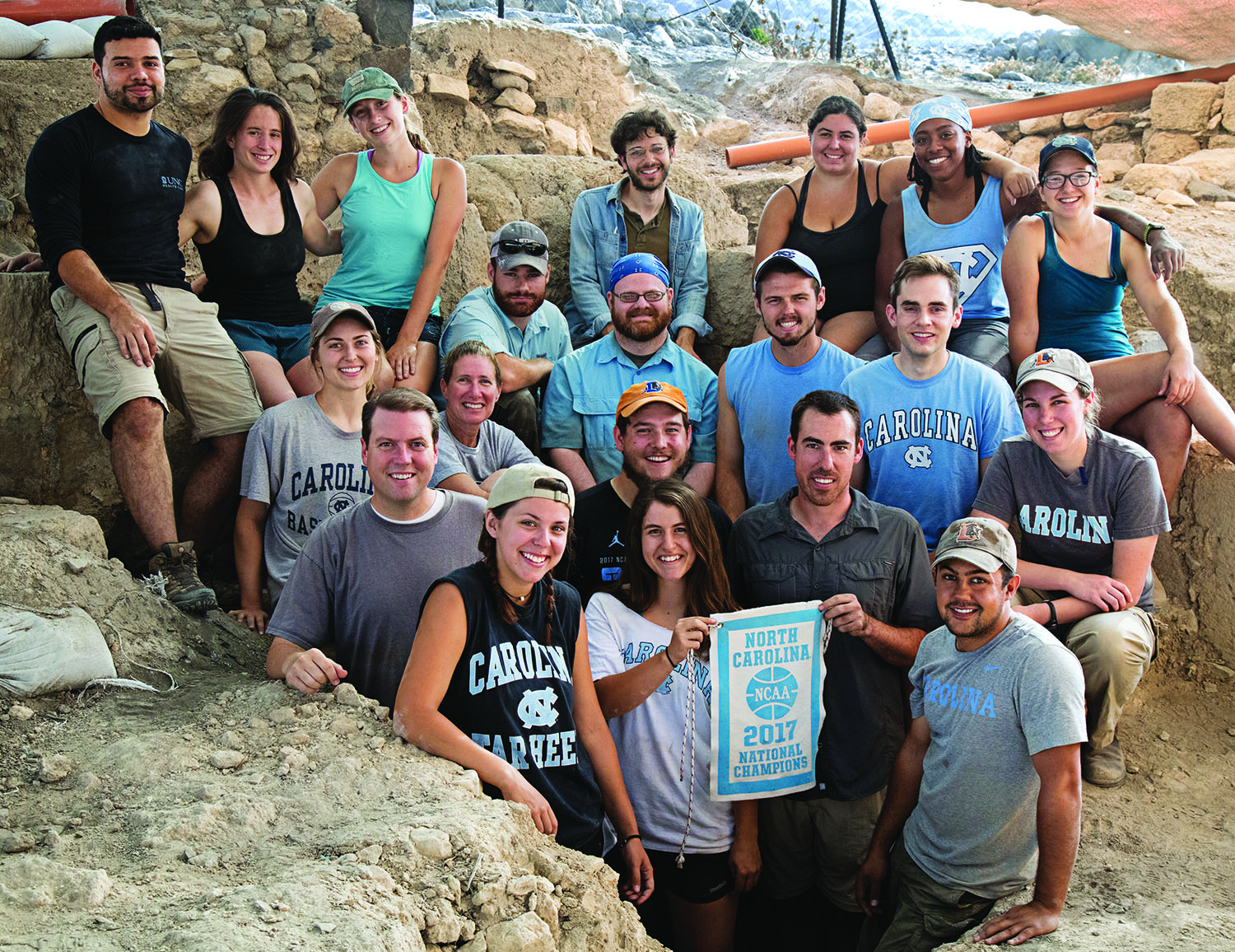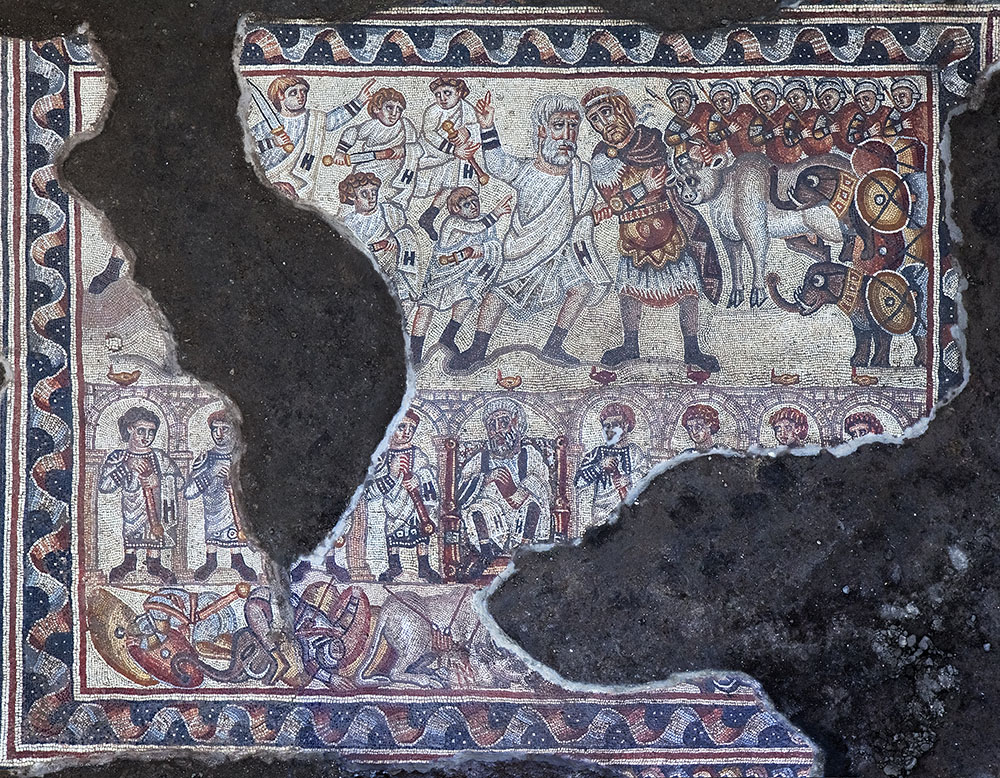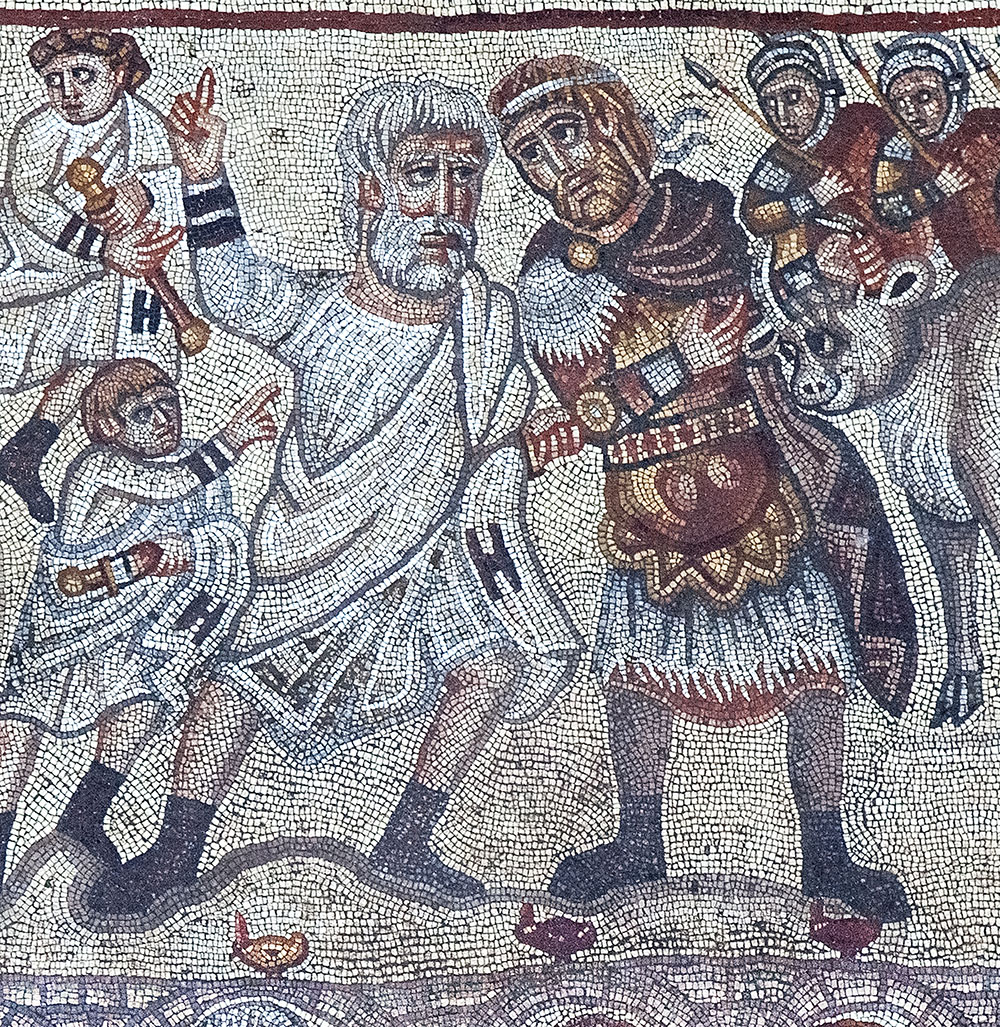Season Seven in Huqoq: Unexpected Discoveries
Posted on Jan. 11, 2018
“I can’t imagine a better experiential education than going to Israel, having the opportunity to travel around, find something that is literally headline news,” said professor Jodi Magness of her research work with UNC students. (Photo courtesy of Jodi Magness)
Jodi Magness and about 40 researchers and students returned last summer from a seventh season of archeological excavation inside a synagogue at Huqoq, an ancient Jewish village in Israel’s Lower Galilee. Magness, the Kenan Distinguished Professor of religious studies, has been working in Israel, she says, “all my life.” She is the sole permit holder for the Huqoq site, and 2017 was, she says, the most productive at the site.
The Review asked Magness about the progress and the excitement of discovery.
Magness: (Laughing) Every year I say it can’t get any better, and it does. I could never have predicted that we would find what we found. That’s the great thing about archeology, right?
The very first mosaics we discovered were in our second season, in 2012, which is when we reached the level of the synagogue. And the very first mosaic that we found was found by a student. He had just finished a bachelor’s degree in economics, and he had no background in archeology and he had never been on a dig before. He was hoeing through the dirt and he felt his hoe clink on something, and he got very excited and called me over. We brushed the dirt away, and we could see the face of a woman peering out at us through the dirt.
It was an unbelievable moment. It was only in the course of continuing work that we realized that, oh boy, we’re gonna have mosaics over this whole thing.
 How did you get started in Huqoq?
How did you get started in Huqoq?
Magness: My goal was not to find mosaics — that’s a byproduct. My research questions had to do with the fate of Jewish settlements under early Christian rule, because, of course, in the fourth century, Constantine legalized Christianity, and Christianity became the official religion of the Roman Empire, and soon afterward the Roman emperors began to issue laws restricting the spread of Judaism, the practice of Judaism. And so from the historical point of view, there is a perception that the Jews suffered and were oppressed and that Jewish settlements must have declined in the centuries after Constantine’s conversion.
My impression from years of working in Israel was that this was not actually borne out in the archeological record — that if we look at the archeological remains, in fact we see Jews building monumental synagogues in the fourth, fifth and sixth centuries — we see Jewish settlements continuing to flourish.
I wanted to excavate a Jewish village in Galilee, because that’s where most of the villages are in this period, with a synagogue building that I would attempt to date and to see whether the date, in fact, is from this period of supposed decline and oppression.
So we did excavate part of the ancient village that’s contemporary with the synagogue, but we also have been excavating the synagogue, and it just turned out that — and this was completely unexpected — the synagogue is decorated with the most amazing mosaics you’ve ever seen.
How would you put your excavations and discoveries in the context of their time and place?
Magness: Huqoq is a village, which means there is more to it than just the synagogue. It was occupied in different periods. The synagogue is fifth century — we have pretty well established that now. We have excavated remains above the synagogue, including the modern village that was abandoned and destroyed in 1948. There is a later medieval reuse of the synagogue building — they rebuilt it actually bigger than it was originally, and it looks like it might also be a synagogue from the Middle Ages.
It is a basilica, which means it’s a big rectangular building with the long walls on the east and the west and the short walls on the north and the south. The entrance or entrances were in the south wall. When you walked in, there was a row of columns that ran around the east, north and west sides and created a central space, called a nave, and then narrower spaces, called aisles, running around three sides.
 We have excavated pretty much the entire nave, and as spectacular as the mosaics were in the east aisle, the main event is the center of the hall. We found that we have a series of these biblical panels in the mosaics in the central hall, including Noah’s ark, the parting of the Red Sea, Jonah and the Tower of Babel.
We have excavated pretty much the entire nave, and as spectacular as the mosaics were in the east aisle, the main event is the center of the hall. We found that we have a series of these biblical panels in the mosaics in the central hall, including Noah’s ark, the parting of the Red Sea, Jonah and the Tower of Babel.
Just as you walked inside, we have a panel with an inscription in Hebrew that was flanked by various images including lions, and the inscription is a very strange inscription that’s in Hebrew that says something that, if you wanted to sort of paraphrase it, says something like, “If you work hard you will achieve great things.”
We still have the west aisle and the north aisle. That’s future seasons. We anticipate another four to five seasons of excavation.
(Magness is about to publish details of what she considers the “most spectacular” mosaic they have found — the depiction of an elephant that she believes represents the legendary meeting between Alexander the Great and the Jewish High Priest.)
What makes these mosaics unique?
Magness: Let me say first what’s not unique. Some people are surprised when they see an ancient synagogue decorated with figured images, because there is a perception that Jewish art was always aniconic — did not include figured images, because of the Second Commandment, which prohibits the making of images for the purpose of worship.
“Every year I say it can’t get any better, and it does. I could never have predicted that we would find what we found. That’s the great thing about archeology, right?”
— Jodi Magness
This is not a new discovery. We have lots of other synagogues of the same periods that are decorated with figured images, images of people, animals, birds.
What is different … we have ancient synagogues from other parts of the Mediterranean world from this period, but they don’t have figured scenes in them. But in Israel, when you have a synagogue of this period decorated with the mosaic floors and it has figured scenes in it, the figured scenes are confined to the nave. Our figured scenes decorate the entire synagogue. There are a couple of other synagogues like this, but they’re very poorly preserved.
We have two scenes of Samson. One is Samson and the foxes, and the other is Samson and the gate of Gaza. This is the first time either of those scenes has been found decorating a mosaic floor of a synagogue in Israel. The elephant mosaic is the first non-biblical mosaic ever found in any ancient synagogue anywhere in the world. We have the first scene of Jonah from any ancient synagogue. There’s a lot of firsts.
 What should the lay person — the North Carolinian or the citizen of the world — take away from what you’re doing? What are you doing for us?
What should the lay person — the North Carolinian or the citizen of the world — take away from what you’re doing? What are you doing for us?
Magness: I think I’m helping to give our students the kind of experiential education that is one of the University’s missions. I can’t imagine a better experiential education than going to Israel, having the opportunity to travel around, find something that is literally headline news. And learn in the field about archeology and about the past.
Our discoveries have literally been covered all around the world. At the end of this past season, I had a film crew from Italy that was emailing me. … What better publicity for the University and the state of North Carolina? There are talks going on at the highest levels of the Israeli government about developing the site as a tourist site, opening it to the public so that everybody can see the mosaics.
And then, of course, there is the scientific contribution, which has my interest. What does the synagogue tell us about and what does the site of Huqoq tell us about Jews and Jewish communities in Galilee against the background of the rise and spread of Christianity? So there’s the contribution to scientific and historical knowledge.
Thanks for reading the Carolina Alumni Review
Carolina Alumni members, sign in to continue reading.
Not yet a member? Become one today.
